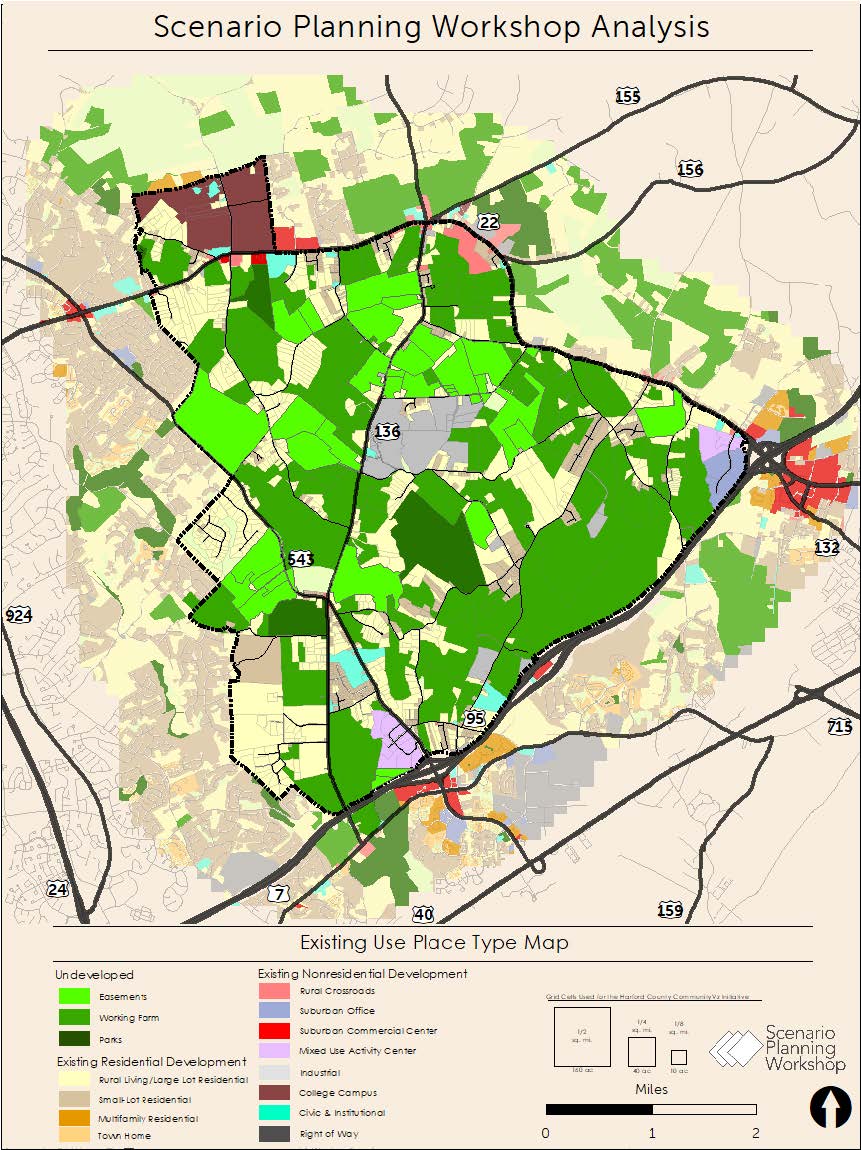This project was the product of a graduate planning course at the University of Maryland in spring 2019. Seven planning graduate students took on an assignment from Harford County, Maryland to develop, model, and analyze alternative futures for Creswell, a rural portion of a County adjacent to Harford County’s Development Envelope and the I-95 corridor. After decades of rapid growth, the supply of land within the Development Envelope has dwindled and housing costs are accelerating, a challenge that is true of all Maryland’s central counties.
At 13,000 acres, Creswell is a complex patchwork of landscapes that include working farms, farms in permanent conservation easement, historic and cultural landmarks, forests, and rural subdivisions. Additionally, Creswell itself is a complex community whose residents have strong and divergent priorities about development, agriculture, infrastructure, and economic vitality.
The central challenge for students was to uncover whether planning could be sensitive enough to preserve the essential character of Creswell’s landscape and functioning, but still allow for select growth. The variety of topics students assessed―agriculture preservation, rural character, green infrastructure, land use, housing, transportation, economic development, and fiscal impacts―provided holistic planning solutions for the County. Further, the ability of students to coordinate with the work of other Creswell-focused courses taught at the university demonstrated the real-world skills necessary for bringing together the work of many into a single, large planning project.
The course was taught by Uri Avin, FAICP, Research Professor at the National Center for Smart Growth at UMD, and Matt Noonkester, AICP, President of City Explained and owner of CommunityViz scenario software. It also drew on other notable adjuncts and mentors of both local and national renown.

